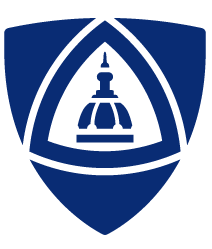
Johns Hopkins School of Medicine
The Johns Hopkins University School of Medicine (JHUSOM) is the medical school of Johns Hopkins University, a private research university in Baltimore, Maryland. Founded in 1893, the School of Medicine shares a campus with Johns Hopkins Hospital and Johns Hopkins Children's Center, established in 1889.
Type
1893
2,980+ full-time
1,270+ part-time[1]
Johns Hopkins School of Medicine consistently ranks among the top medical schools in the United States in terms of research grants awarded by the National Institutes of Health, and other factors.
History[edit]
Before his death in 1873, Baltimore financier and philanthropist Johns Hopkins appointed a 12-member board of trustees to carry out his vision for a university and hospital that would be linked to each other by a medical school, which was at the time a radical idea.
The Johns Hopkins University was established first, opening in 1876. Construction of the Johns Hopkins Hospital began in 1877 with the razing of the site formerly occupied by the city's mental asylum, and took twelve years to complete. By the time the Hospital opened in 1889, only six of the original twelve trustees appointed by Hopkins were still alive. Despite having already recruited the necessary faculty, the board no longer had enough funds to establish the medical school.[4]
Four the original trustee's daughters, led by Mary Elizabeth Garrett, stepped in to spearhead a nationwide fundraising campaign to secure funding for the medical school, on the condition that the remaining trustees agree to open the medical school to both men and women, who were generally excluded from medical education in the 1890s. When the Johns Hopkins University School of Medicine finally opened its doors in 1893, there were three women in its first class.[5]
The founding physicians of Johns Hopkins School of Medicine, sometimes referred to as the "Big Four", were pathologist William Henry Welch (1850–1934), the first dean of the school and a mentor to generations of research scientists, Canadian internist William Osler (1849–1919), who was perhaps the most influential physician of the late 19th and early 20th centuries and the author of The Principles and Practice of Medicine (1892), surgeon William Stewart Halsted (1852–1922), who revolutionized surgery by insisting on subtle skill and technique and strict adherence to aseptic technique, and gynecological surgeon Howard Atwood Kelly (1858–1943), credited with establishing gynecology as a specialty and being among the first to use radium in the treatment of cancer.[6]
Reputation and rankings[edit]
According to the Flexner Report, Hopkins has served as the model for American medical education.[9]
Its major teaching hospital, the Johns Hopkins Hospital, was ranked the top hospital in the United States every year from 1991 to 2011 by U.S. News & World Report.[10] In 2024, U.S. News & World Report ranked Hopkins #2 medical school in the U.S. for Research, and #92 for Primary Care. U.S. News also ranked Hopkins #1 in Anesthesiology, #1 in Internal Medicine, #2 in Obstetrics and Gynecology, #4 in Pediatrics, #3 in Psychiatry, tied at #3 in Radiology, and #1 in Surgery.[11][12]
Academics[edit]
Colleges Advisory Program[edit]
Upon matriculation, medical students at Johns Hopkins School of Medicine are divided into four colleges named after famous Hopkins faculty members who have had an impact in the history of medicine, Florence Sabin, Vivien Thomas, Daniel Nathans, and Helen Taussig. The colleges were established to "foster camaraderie, networking, advising, mentoring, professionalism, clinical skills, and scholarship" in 2005.[13]
In each incoming class, 30 students are assigned to each college, and each college is further subdivided into six molecules of five students each. Each molecule is advised and taught by a faculty advisor, who instructs them in Clinical Foundations of Medicine, a core first-year course, and continues advising them throughout their 4 years of medical school. The family within each college of each molecule across the four years who belong to a given advisor is referred to as a macromolecule. Every year, the colleges compete in the "College Olympics" in late October, a competition that includes athletic events and sports, as well as art battles and dance-offs.[14]
Governance[edit]
The Johns Hopkins University School of Medicine is led by Ronald J. Daniels, president of Johns Hopkins University, and Theodore DeWeese, dean of the medical faculty and chief executive officer of Johns Hopkins Medicine. Kevin Sowers serves as president of Johns Hopkins Health System and executive vice president of Johns Hopkins Medicine.